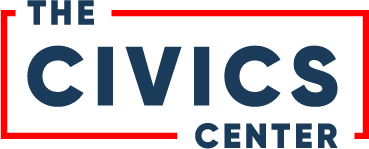Wisconsin’s Newest Voters: Democracy Optimism and How to Build On It
In early 2022, we published some shocking statistics about Wisconsin. Under five percent of 18-year-olds in Milwaukee County, and only 10% in Dane County, were registered to vote.
The goal wasn’t to instill doom, but hope. Let’s get them registered, we urged, and then they will be likely to vote. We predicted this because our research shows in elections where the stakes are made plain, young people who are registered turn out at high rates. In every presidential election going back to 2004, turnout among *registered* youth 18-24 has been over 75%.
Efforts to register and turnout the youngest voters in Wisconsin had enormous impact in statewide elections in the 2022 midterms and the 2023 judicial election for the Wisconsin Supreme Court, as well.
We recently obtained new data from the Wisconsin Elections Commission, and the results are very encouraging. As of August 2023, for youth born in 2003 (those who were 18 at the start of 2022), registration rates for school districts in both Milwaukee and Dane Counties increased by 30 percentage points or more on average (to 43% for Milwaukee County and 41% for Dane). Midterm turnout among these registered youth was greater than 70% in both counties.
These findings support what we see elsewhere in the country: The biggest challenge is not turning out young registered voters, but helping them to register in the first place.
Organizers focused great attention on youth in Wisconsin in 2022, with college campuses as the focal point. Our Wisconsin research results (set forth in the charts below) illustrate that (a) their organizing worked in achieving much higher registration and turnout; (b) registration rates for the youngest voters in school districts without the benefit of a college campus remain far lower than rates for older voters; and (c) stark disparities exist among districts.
All of us who care about democracy and youth political participation can build on the lessons of successful college campus engagement and on existing high school organizing work by local partners. Together, we can fill the remaining gaps and institutionalize voter registration in Wisconsin high schools.
Our 2023 Future Voter Scorecards for Milwaukee and Dane Counties, published below, provide a data-centered starting point. For each school district in each county we estimate the registration rates for youth born in 2004 who reside in the district, and we rank school districts accordingly.
Almost everywhere, despite dramatic improvement compared to registration rates for the youngest potential voters in 2022, significant further strides are needed to reach parity with older voters.
The registration gap between the youngest potential voters and older voters in Wisconsin is stark. More than 75% of Wisconsin citizens ages 45 and above are registered. Assuming registration rates for the youngest voters statewide are similar to those in the average school district in Milwaukee and Dane Counties, we see a 35 percentage point gap between the youngest voters and those 45 and above statewide. That’s roughly 27,000 missing 18- to 19-year-old registered voters in Wisconsin. That’s greater than the margin of victory in the 2020 presidential election in the state as a whole.
Conclusion
The potential for registering our youngest voters is clear, and Wisconsin’s results show that they are eager to join the democratic process. Our research also shows that we need more organizing not only on college campuses; we need a more focused and dedicated effort in high schools across the state.
A school year leading into a presidential election presents an ideal opportunity: with partnership opportunities and free training from The Civics Center, parents, educators and teens can see how easy it is to run voter registration drives in their schools, so that everyone who is eligible will be ready to vote before they graduate. Seniors can look to graduation as a goal for full participation, and Juniors can start planning ahead for registering their classmates when they are Seniors in the fall. High school organizing can have the same impact as college organizing and result in far greater election turnout for the youngest cohort of age-eligible voters.
